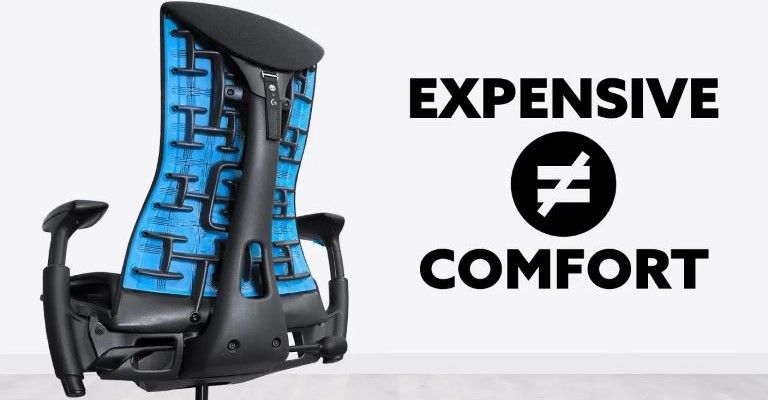Today, we will debunk the top 10 office chair myths that you cannot afford to ignore. There are many misconceptions about office chairs, and it’s important to separate fact from fiction when it comes to choosing the right chair for you. Let’s dive in and bust these myths one by one.
Full Disclaimer: We are an office furniture dealer and sell some of the office desk chairs we review. To learn more about the products we sell, our review process and why you can trust us, please visit: Why we’re different. Who is BTOD.com and The Breakroom Blog?
Top 10 Office Chair Myths Links
- Myth 1: All Ergonomic Chairs Should Have a Headrest
- Myth 2: A Thick Padded Seat is Better
- Myth 3: Office Chairs Don’t Need Adjustable Arms
- Myth 4: Any Office Chair Can be Comfortable
- Myth 5: Forward Seat Tilt is a Must
- Myth 6: Office Chairs Can Explode
- Myth 7: Expensive Chairs are Always More Comfortable
- Myth 8: Weight Rating Determines Chair Size
- Myth 9: Office Chairs Should be Silent
- Myth 10: Office Chair Parts Should Not Move
Myth 1: All Ergonomic Chairs Should Have a Headrest
A common misconception is that all ergonomic chairs should have a headrest to be considered ergonomic. However, many major brands offer high-performance seating options with no headrest at all. In some cases, the headrest is simply decorative and offers little to no support.

While a headrest can be valuable for those who spend hours consuming content in their chairs, using an office chair with a headrest all day can potentially lead to a weaker neck and other problems. It’s important to choose a chair that provides proper support without relying solely on a headrest.
Myth 2: A Thick Padded Seat is Better
Moving on to another myth; many of us assume that a thick padded seat is good for us long term. We see ourselves sinking into a big pillow-top seat and floating on it like a dream during our workday. However, the reality is that a supportive seat is more important than thickness. The recommendation for the majority of people is a seat that is no thicker than an inch and a half to two inches.
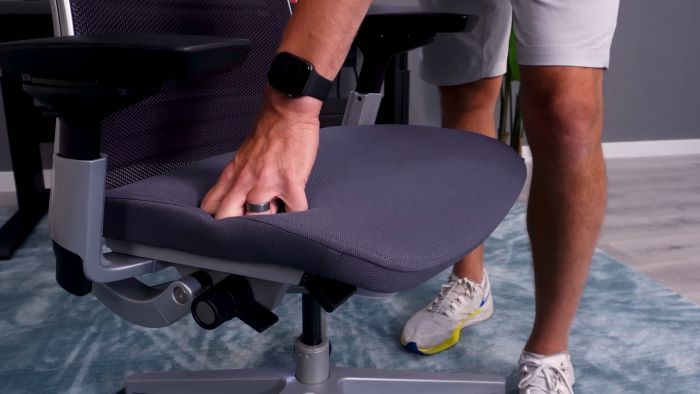
Chairs with comfortable seats that allow easy movement and have a curved front to help the blood flow in our legs is really important. As Alan Hedge, the leader in ergonomics, explains, a plush seat may feel good initially, but over time it can become very uncomfortable.
Myth 3: Office Chairs Don’t Need Adjustable Arms
Some people think they can manage with an office chair that doesn’t have adjustable arms. Experts like Allen Hedge would say that armrests aren’t only for support, but it’s also good to have a bit of support to take breaks and switch up your posture. Adjustable arms are useful because they can be changed a little to fit different body shapes and can be moved when you want to shift your arms or don’t need them. You don’t have to use them constantly, but having arms you can adjust can be beneficial.
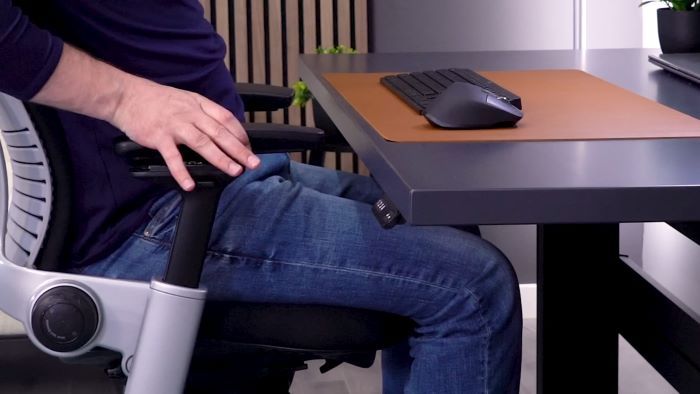
Myth 4: Any Office Chair Can be Comfortable
Thinking that any office chair will feel comfortable sitting more than 14 hours every day, week after week, month after month, year after year, is a big mistake. Doing too much of any one thing can lead to feeling achy and sore. Sitting in an office chair without taking breaks is no exception. It’s important to switch up your posture and take breaks throughout the day. Consider options like a standing desk to allow yourself to work while standing, giving your body a break from the same seated position.
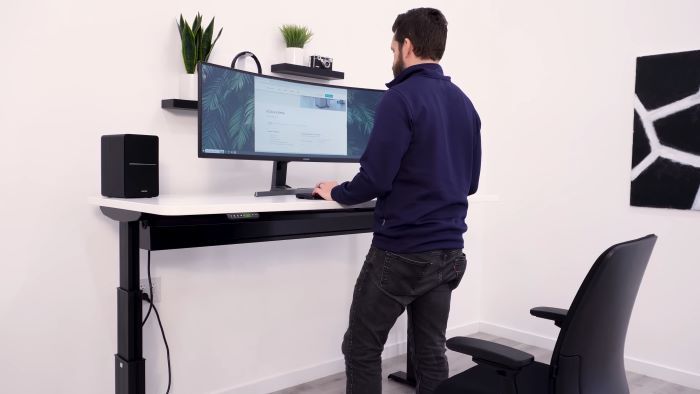
Myth 5: Forward Seat Tilt is a Must
Next, people assume that they need or will even like a forward seat tilt function on their next chair. This misconception stems from the popularity of the Herman Miller Aeron chair, which introduced the forward seat tilt function. However, while this feature can be helpful for certain tasks on the computer, it is often one of the least comfortable positions for extended periods of sitting. It is important to consider whether you truly need this feature before making a decision based on its availability.
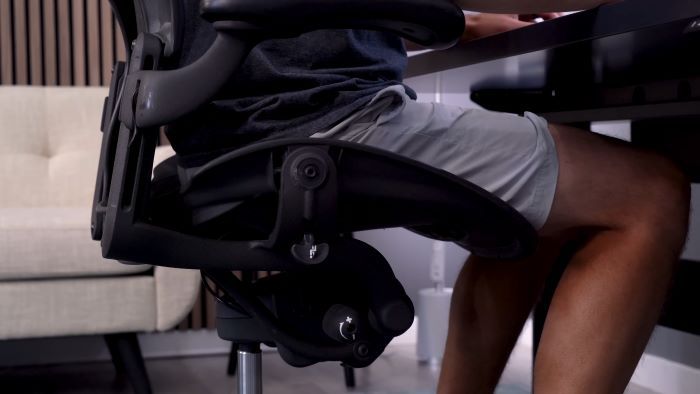
Myth 6: Office Chairs Can Explode
There is a myth that office chairs can explode, causing injury or even death. This myth originated from a story about a 14-year-old boy who was supposedly killed by a gas cylinder exploding under his chair. However, this story is highly unlikely and has been debunked. Office chairs are built with thick steel mechanisms that make it almost impossible for a gas cylinder to explode in such a manner. It is important not to believe or spread this myth, as it can cause unnecessary fear and panic.

Myth 7: Expensive Chairs are Always More Comfortable
While it is true that more expensive chairs often come with benefits such as better durability and longer warranties, it does not automatically guarantee that they will be more comfortable for you. Comfort is subjective and varies from person to person.
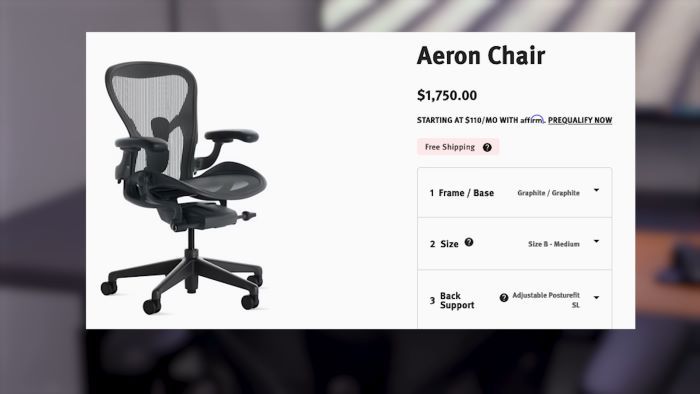
For example, the Herman Miller Aeron chair, which retails for over $1700 features some of the best materials. However, its mesh seat and hard frame may not be preferred by those who do not like sitting on mesh. It is important to consider your personal preferences and try out different chairs before making a decision solely based on price.
Myth 8: Weight Rating Determines Chair Size
Many people mistakenly believe that the weight rating of a chair is a sizing guide. While a chair may have a high weight rating, it does not mean that it will properly fit someone who weighs that much. Weight rating is not the best guide for determining the proper size of a chair. It is important to pay attention to the actual dimensions of the chair to ensure a better fit.
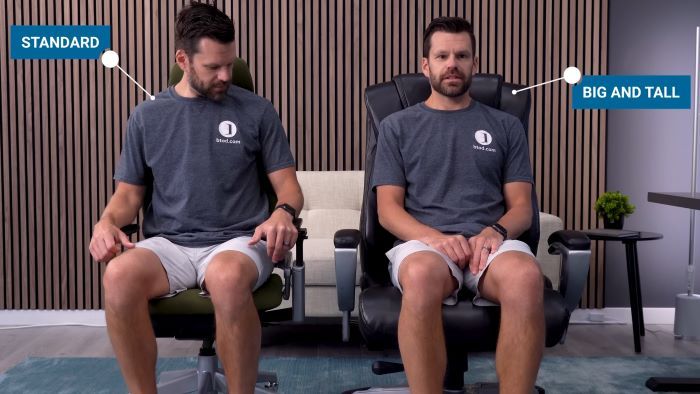
Myth 9: Office Chairs Should be Silent
It is a common misconception that office chairs should be completely silent. Although, any chair that has movement to it is likely to make some noises eventually. While some chairs might make more sounds than others, a little maintenance can go a long way in reducing these noises. Applying white lithium grease or dry lubrication with PTFE can help reduce the sounds caused by metal or plastic rubbing.

Myth 10: Office Chair Parts Should Not Move
The final myth we have is that some people believe office chair parts, such as the seat pan or armrests, should be locked in place at all times. It is important to understand that these parts are designed to move easily on highly adjustable ergonomic chairs. Without a little bit of wiggle room, the friction between the parts would make them difficult to move. It is normal for office chair parts to have some movement or wiggle, and it does not indicate a defect or poor quality.
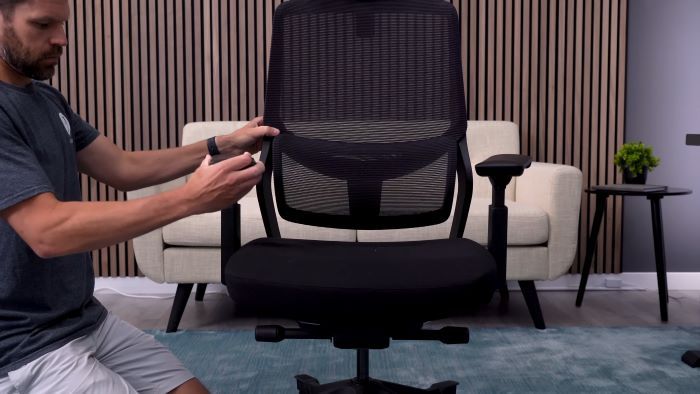
Bottom Line
Understanding the truth behind these misconceptions will help you prioritize comfort, support, and adjustability in your office chair selection. Remember, not all ergonomic chairs need a headrest, a thick padded seat is not always better, adjustable arms can provide valuable support and taking breaks is essential for long hours of sitting. By debunking these myths, you can find an office chair that truly meets your needs and promotes a healthy and comfortable work environment.


